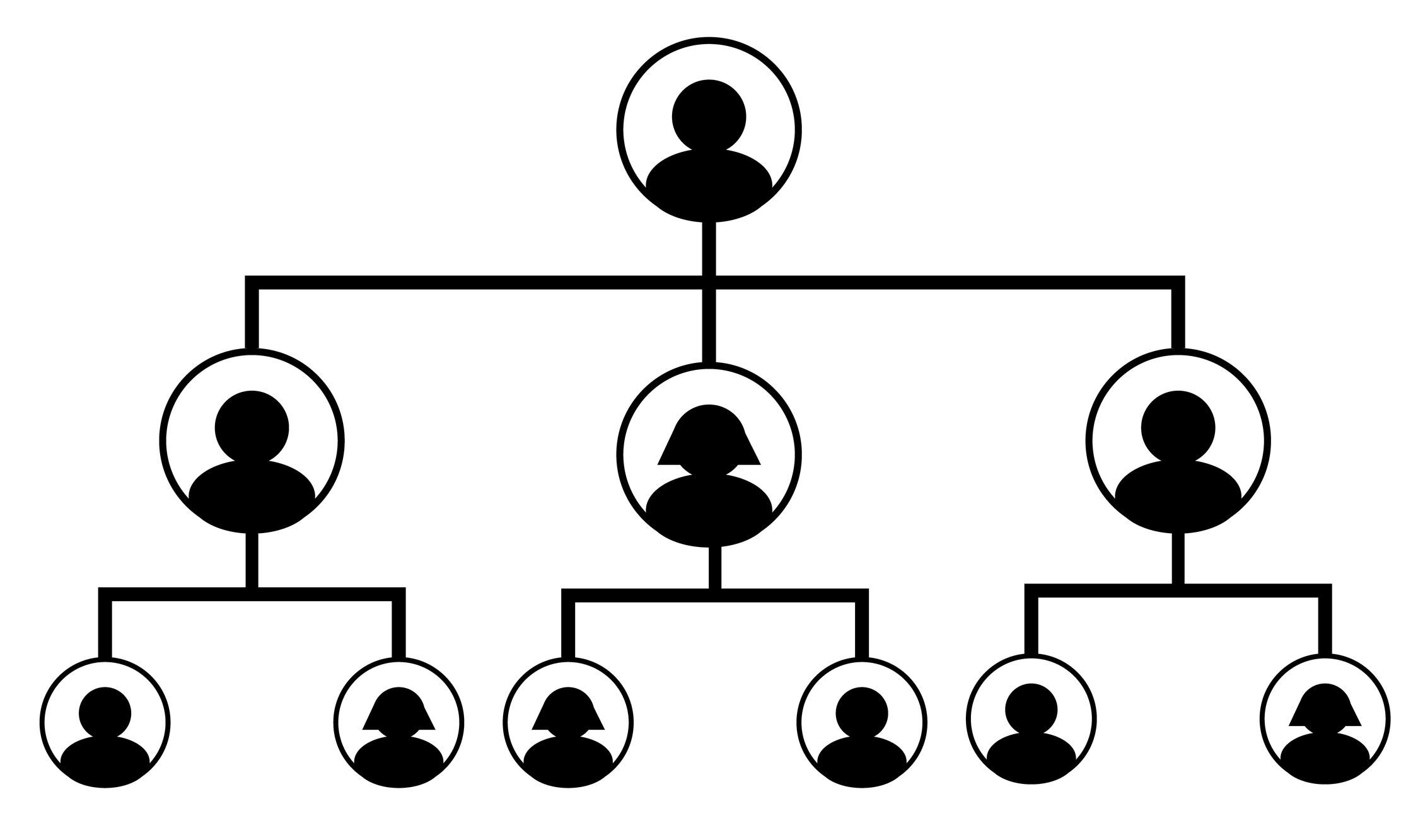15 Estate Planning Terms You Need to Know
Sometimes industry jargon can turn otherwise understandable concepts into stumbling blocks. Here are simplified explanations, definitions and uses for some estate planning tools.


Estate planning, though often perceived as complex and confusing, becomes less daunting with increased understanding. While initiating the process may seem overwhelming, a well-executed and thorough estate plan serves as a crucial initial step in safeguarding your family and legacy.
What are the essential steps? What truly matters? And what do all those unfamiliar terms signify? To help you navigate this process, I've compiled and clarified 15 estate planning terms you should understand.
Estate planning definitions and terms to know

1. Codicil: A formally executed document that amends the terms of a will so that a complete rewriting of the will is not necessary. It will either explain, modify or revoke aspects of an established document.
From just $107.88 $24.99 for Kiplinger Personal Finance
Become a smarter, better informed investor. Subscribe from just $107.88 $24.99, plus get up to 4 Special Issues

Sign up for Kiplinger’s Free Newsletters
Profit and prosper with the best of expert advice on investing, taxes, retirement, personal finance and more - straight to your e-mail.
Profit and prosper with the best of expert advice - straight to your e-mail.
Purpose: Codicils are required to change/update your will after significant life changes such as births, deaths, marriages, divorces or moving out of state.
2. Conservator: An individual or a corporate fiduciary appointed by a court to care for and manage the property of an incapacitated person in the same way that a guardian cares for and manages the property of a minor.
Purpose: A conservator's primary purpose is to protect the financial and/or personal well-being of an individual who is unable to manage their own affairs due to incapacity or legal limitations.

3. The Generation-Skipping Transfer Tax (GSTT): a separate tax that is imposed in addition to the estate tax. It is applied to outright gifts and transfers in trust that exceed the GSTT exemption. These transfers, which can occur during one's lifetime or at death, are made to beneficiaries who are two or more generations younger than the donor, such as grandchildren or great-grandchildren. The tax is currently calculated at a flat rate of 40%, which is equal to the top estate and gift tax rate
Purpose: The GSTT is designed to prevent the avoidance of gift or estate tax at the skipped generational level. Some states also impose a state-level generation-skipping transfer tax.
4. Gross Estate: This estate planning term refers to the total value of an individual's property at the time of their death. It also encompasses certain assets they previously transferred, which are still subject to federal estate tax regulations.
Purpose: This comprehensive valuation is a key component in determining federal estate tax liability.
5. GSTT exemption: The GSTT exemption amount is $13.99 million per individual in 2025. The amount is currently set to revert to a $5 million baseline in 2026, and is projected to be $7 million when indexed for inflation, unless Congress acts prior to this date to extend the increased exemption.
Purpose: The exemption allows you to reduce or potentially eliminate the transfer taxes associated with gifting or passing money to grandchildren or other skip beneficiaries.

6. Heir: A person entitled to a distribution of an asset or property interest under applicable state law if you die intestate due to the absence of a will. “Heir” and “beneficiary” are not interchangeable, although they may refer to the same individual in a particular case. Anyone you chose to leave a bequest is a beneficiary, only those related by blood or law can be your heir.
Purpose: If you die without a valid will, you die intestate, and your state's intestacy laws determine how your assets are distributed, typically to close relatives. Intestate succession laws would then dictate the order in which your assets are distributed to your heirs.
7. Life estate: A life estate grants a beneficiary, also called the life tenant, the legal right to use a property for the duration of their life under state law. This represents the entirety of their interest in the property.
Purpose: Life estates provide a straightforward way to transfer property ownership to the next generation without the complexities of a will or trust. Because following the death of the life beneficiary, the title fully vests the person named in the deed or trust agreement. This person might be referred to as ‘the remainderman.’

8. Operation of law: The way some assets will pass at your death, based on state law or the ownership of the asset, rather than under the terms of your will.
Purpose: Ease and avoidance of probate; no specific steps need to be taken by the parties for the transfer to occur. These accounts or assets have a named beneficiary, such as a life insurance policy, retirement plan or a Transfer on Death (TOD) account.
9. Payable on death (POD) and Transfer on death (TOD) designations: POD and TOD are types of beneficiary designations for a financial account that will automatically pass title to the assets at death to a named individual or revocable trust outside of probate.
Purpose: POD and TOD accounts can be a simple and effective way to ensure the transfer of ownership of an account or policy to your chosen beneficiary.

10. Per Stirpes: This Latin term, meaning "per branch," describes a method of distributing property in estate planning. It follows the family tree, with descendants inheriting the share their deceased ancestor would have received if alive. Under per stirpes, each branch of the named individual's family is entitled to an equal portion of the estate.
How it works:
- If all adult children are living, each receives an equal share
- If an adult child has passed away, that adult child's share is divided equally among their children
Purpose: It simplifies planning by eliminating the need to name specific contingent beneficiaries for every possible scenario. And it ensures that each "branch" of the family receives an equal share.

12. Qualified domestic trust – A ‘QDOT’ is a marital trust created for the benefit of a non-U.S. citizen spouse containing special provisions specified by the Internal Revenue Code to qualify for the marital deduction.
Purpose: Estate planning advantages normally afforded to spouses are not available to non-citizen spouses even if they are permanent legal residents. A surviving non-citizen spouse is not entitled to an unlimited gift tax deduction or an unlimited marital deduction.
13. Remainderman: A remainderman, in property law, is someone who is entitled to inherit property in the future. This inheritance occurs after the termination of a preceding estate, most commonly a life estate. The remainderman is a third party who is not the creator or initial holder of the estate.
Purpose: Naming a remainderman ensures a clear and planned transfer of property when the life tenant passes away. This process can often bypass probate, thereby reducing associated costs and complexities.
14. Residue or residuary estate: The property remaining in an estate after payment of the estate’s debts, taxes, and expenses, and after all specific gifts of property and money have been distributed according to the will.
Purpose: The primary goal is to ensure all estate assets are identified and distributed as the deceased person wished. If a residuary clause is absent, any leftover assets will be distributed based on intestacy laws, potentially contradicting the intentions of the deceased.

15. Spendthrift provision: A clause in a trust that prevents beneficiaries from giving away their interest in the trust to others, a voluntary transfer, and also protects their interest from being claimed by their creditors through an involuntary transfer. This is often included to safeguard the trust assets from claims of the beneficiary’s creditors.
Purpose: Spendthrift clauses are frequently incorporated when a beneficiary is prone to financial mismanagement, has issues with substance abuse, or faces other challenges that could jeopardize trust funds.
Knowing is half the battle
Estate planning is the final piece of a sound financial plan. You can not only ensure your assets are distributed according to your wishes but organize them in a way to reduce friction and costs after you pass. Trusts are one instrument you can use to transfer assets to your intended beneficiary, reduce your tax burden and preserve more of your wealth.
Knowing the meaning of various legal terms and their purpose can help you better understand your estate planning needs and options. The next step is to create or update your estate plan.
Related Content
Profit and prosper with the best of Kiplinger's advice on investing, taxes, retirement, personal finance and much more. Delivered daily. Enter your email in the box and click Sign Me Up.

Donna joined Kiplinger as a personal finance writer in 2023. She spent more than a decade as the contributing editor of J.K.Lasser's Your Income Tax Guide and edited state specific legal treatises at ALM Media. She has shared her expertise as a guest on Bloomberg, CNN, Fox, NPR, CNBC and many other media outlets around the nation. She is a graduate of Brooklyn Law School and the University at Buffalo.
-
 The 'Scrooge' Strategy: How to Turn Your Old Junk Into a Tax Deduction
The 'Scrooge' Strategy: How to Turn Your Old Junk Into a Tax DeductionTax Deductions We break down the IRS rules for non-cash charitable contributions. Plus, here's a handy checklist before you donate to charity this year.
-
 IRS Says You Made a Tax Return Mistake? A New Law Could Help You Fight Back
IRS Says You Made a Tax Return Mistake? A New Law Could Help You Fight BackTax Law Updated taxpayer protections change what the IRS must explain on error notices and how long you have to respond.
-
 What to expect from the global economy in 2026
What to expect from the global economy in 2026The Kiplinger Letter Economic growth across the globe will be highly uneven, with some major economies accelerating while others hit the brakes.
-
 What You Need to Do With Your 401(k) Before 2025 Is Over
What You Need to Do With Your 401(k) Before 2025 Is OverBefore 2025 ends, check your 401(k) contributions, investments, and catch-up eligibility to lock in this year’s tax savings and employer match.
-
 I'm a Tax Attorney: These Are the Year-End Tax Moves You Can't Afford to Miss
I'm a Tax Attorney: These Are the Year-End Tax Moves You Can't Afford to MissDon't miss out on this prime time to maximize contributions to your retirement accounts, do Roth conversions and capture investment gains.
-
 I'm an Investment Adviser: This Is the Tax Diversification Strategy You Need for Your Retirement Income
I'm an Investment Adviser: This Is the Tax Diversification Strategy You Need for Your Retirement IncomeSpreading savings across three "tax buckets" — pretax, Roth and taxable — can help give retirees the flexibility to control when and how much taxes they pay.
-
 The Top 22 Gifts for Grandkids from Walmart in 2025
The Top 22 Gifts for Grandkids from Walmart in 2025From PlayStation to Labubu, you'll find the hottest gifts of 2025 for your grandkids at Walmart this year. Some of them are up to 78% off.
-
 I'm Retired With $2.2 Million Saved and Work 2 Retail Shifts a Week for Fun. My Young Colleague Just Got Her Hours Cut. Should I Quit So She Can Have My Shifts?
I'm Retired With $2.2 Million Saved and Work 2 Retail Shifts a Week for Fun. My Young Colleague Just Got Her Hours Cut. Should I Quit So She Can Have My Shifts?Should she quit her job so a struggling young colleague can take her shifts? We asked certified financial planners for advice.
-
 Could an Annuity Be Your Retirement Safety Net? 4 Key Considerations
Could an Annuity Be Your Retirement Safety Net? 4 Key ConsiderationsMore people are considering annuities to achieve tax-deferred growth and guaranteed income, but deciding if they are right for you depends on these key factors.
-
 I'm a Financial Pro: Older Taxpayers Really Won't Want to Miss Out on This Hefty (Temporary) Tax Break
I'm a Financial Pro: Older Taxpayers Really Won't Want to Miss Out on This Hefty (Temporary) Tax BreakIf you're age 65 or older, you can claim a "bonus" tax deduction of up to $6,000 through 2028 that can be stacked on top of other deductions.
-
 Why Playing It Safe in Retirement Is a Big Risk
Why Playing It Safe in Retirement Is a Big RiskFear of losing money could actually cost you in retirement. Find out why being too conservative with your life savings can hurt you and how to stop that from happening.